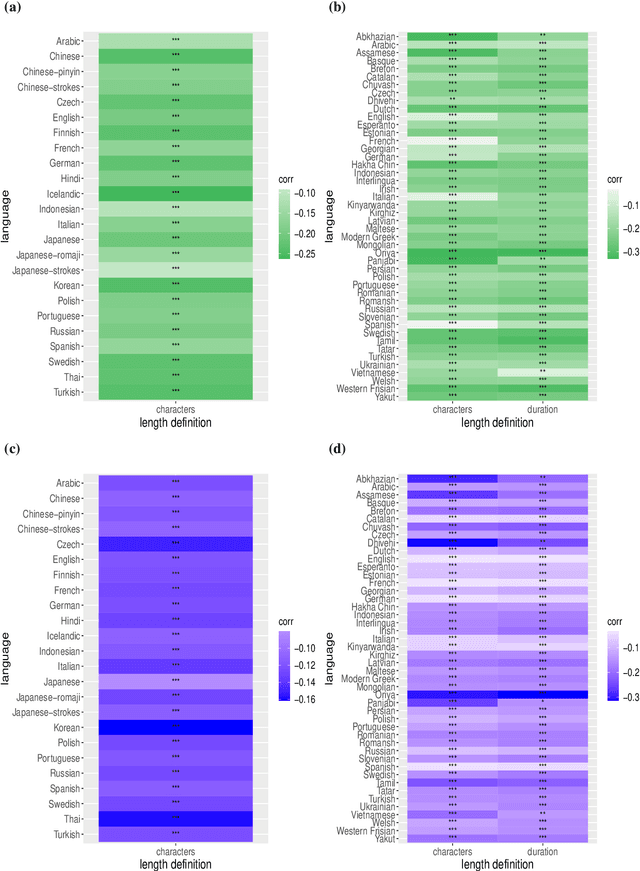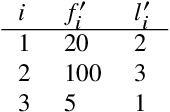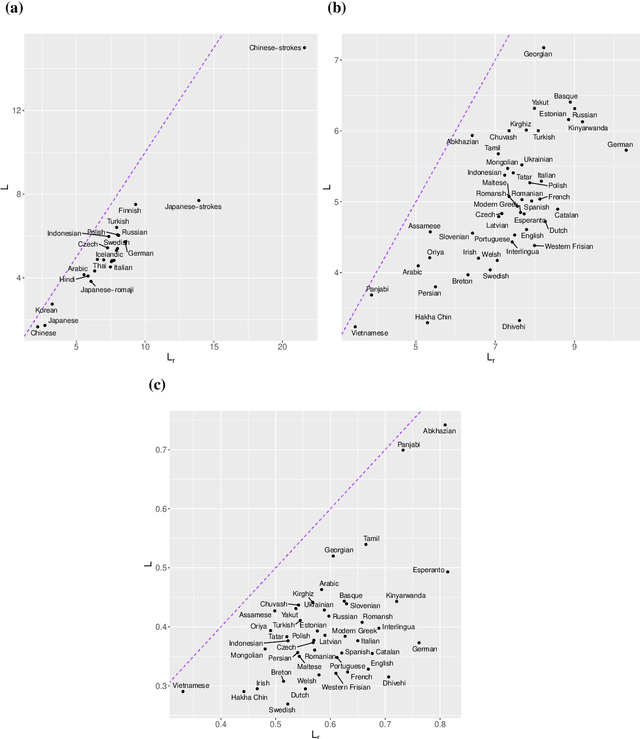Sonia Petrini
Direct and indirect evidence of compression of word lengths. Zipf's law of abbreviation revisited
Mar 17, 2023



Abstract:Zipf's law of abbreviation, the tendency of more frequent words to be shorter, is one of the most solid candidates for a linguistic universal, in the sense that it has the potential for being exceptionless or with a number of exceptions that is vanishingly small compared to the number of languages on Earth. Since Zipf's pioneering research, this law has been viewed as a manifestation of a universal principle of communication, i.e. the minimization of word lengths, to reduce the effort of communication. Here we revisit the concordance of written language with the law of abbreviation. Crucially, we provide wider evidence that the law holds also in speech (when word length is measured in time), in particular in 46 languages from 14 linguistic families. Agreement with the law of abbreviation provides indirect evidence of compression of languages via the theoretical argument that the law of abbreviation is a prediction of optimal coding. Motivated by the need of direct evidence of compression, we derive a simple formula for a random baseline indicating that word lengths are systematically below chance, across linguistic families and writing systems, and independently of the unit of measurement (length in characters or duration in time). Our work paves the way to measure and compare the degree of optimality of word lengths in languages.
The distribution of syntactic dependency distances
Nov 26, 2022



Abstract:The syntactic structure of a sentence can be represented as a graph where vertices are words and edges indicate syntactic dependencies between them. In this setting, the distance between two syntactically linked words can be defined as the difference between their positions. Here we want to contribute to the characterization of the actual distribution of syntactic dependency distances, and unveil its relationship with short-term memory limitations. We propose a new double-exponential model in which decay in probability is allowed to change after a break-point. This transition could mirror the transition from the processing of words chunks to higher-level structures. We find that a two-regime model -- where the first regime follows either an exponential or a power-law decay -- is the most likely one in all 20 languages we considered, independently of sentence length and annotation style. Moreover, the break-point is fairly stable across languages and averages values of 4-5 words, suggesting that the amount of words that can be simultaneously processed abstracts from the specific language to a high degree. Finally, we give an account of the relation between the best estimated model and the closeness of syntactic dependencies, as measured by a recently introduced optimality score.
The optimality of word lengths. Theoretical foundations and an empirical study
Aug 28, 2022



Abstract:One of the most robust patterns found in human languages is Zipf's law of abbreviation, that is, the tendency of more frequent words to be shorter. Since Zipf's pioneering research, this law has been viewed as a manifestation of compression, i.e. the minimization of the length of forms - a universal principle of natural communication. Although the claim that languages are optimized has become trendy, attempts to measure the degree of optimization of languages have been rather scarce. Here we demonstrate that compression manifests itself in a wide sample of languages without exceptions, and independently of the unit of measurement. It is detectable for both word lengths in characters of written language as well as durations in time in spoken language. Moreover, to measure the degree of optimization, we derive a simple formula for a random baseline and present two scores that are dualy normalized, namely, they are normalized with respect to both the minimum and the random baseline. We analyze the theoretical and statistical pros and cons of these and other scores. Harnessing the best score, we quantify for the first time the degree of optimality of word lengths in languages. This indicates that languages are optimized to 62 or 67 percent on average (depending on the source) when word lengths are measured in characters, and to 65 percent on average when word lengths are measured in time. In general, spoken word durations are more optimized than written word lengths in characters. Beyond the analyses reported here, our work paves the way to measure the degree of optimality of the vocalizations or gestures of other species, and to compare them against written, spoken, or signed human languages.
 Add to Chrome
Add to Chrome Add to Firefox
Add to Firefox Add to Edge
Add to Edge